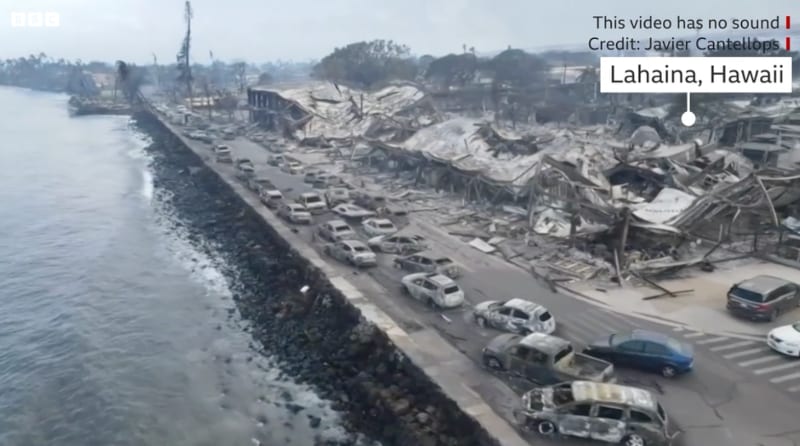Hawaii wildfire industry loss estimates start to coalesce around $5bn

Insurance and reinsurance market loss estimates from the deadly wildfires that struck the island of Maui, Hawaii earlier this month, are now being seen as potentially as high as $7 billion, given high property values, the cost of reconstruction, plus elements such as additional living expenses and business interruption that are expected to be elevated.
Industry loss estimates range from $3 billion to as high as $6 billion from modelling and analytics firms, but we’re told some in the reinsurance and insurance-linked securities (ILS) industry are taking $7 billion as a possible top-end.
One report we’ve seen from an ILS fund manager, states that the insured loses are seen as likely to fall in the range from $5 billion to $7 billion, while others are pointing to the $5 billion mark as a possible place to start making steps to reserve any exposure to the devastating wildfires.
Reinsurance broker Guy Carpenter said that it “estimates the insured losses will end on the higher end of the range of industry viewpoints based on an analysis of the largest wildfires in the state of California.”
Guy Carpenter has given an industry loss range of $4 billion to $6 billion, hence $5 billion being the mid-point of that and a reasonable place to see the estimates coalescing.
The reinsurance broker points to demand surge, likening the fact these wildfires are on an island with the experience in Puerto Rico after hurricane Maria, when demand surge was seen to elevate insured losses by 20% to 35%.
“With Hawaii much further from the mainland, it is possible demand surge could be higher,” Guy Carpenter explained.
Business interruption is also seen as a key factor, with hotels in the area having cancelled 30 to 90 day of bed nights to deal with the housing of homeless citizens and ingress/egress issues.
Another factor is debris removal costs, which can elevate claims severity, Guy Carpenter said.
Insurance-linked securities (ILS) funds that have issued reports on the Hawaii wildfires, that we’ve seen, appear to range slightly higher in insurance industry loss estimates, with up to $7 billion cited.
They discuss additional factors such as the cost of additional living expenses, so the rehousing of people made homeless by the wildfires, as potentially significant contributors to the ultimate industry loss costs.
In addition, they cite the expensive reconstruction cost values, which will be exacerbated by the aforementioned demand surge, while labor costs are also likely to be a significant factor in the rebuild.
In addition, there is the fact Hawaii is typically a location with high property values, which makes some believe the ultimate costs could be underestimated and some suggest the lower-end of the modelling firm industry loss ranges are too low a place to start the range.
Many in the ILS fund market have been reducing exposure to wildfires in recent years, since the costly experience with the California events of recent years.
As a result, the main exposure for the ILS market, even with the industry loss in the region of $5 billion, would be some limited mark-to-market hit to aggregate catastrophe bonds where their sponsors suffer a relatively significant proportion of the insured losses from these wildfires in Hawaii.






